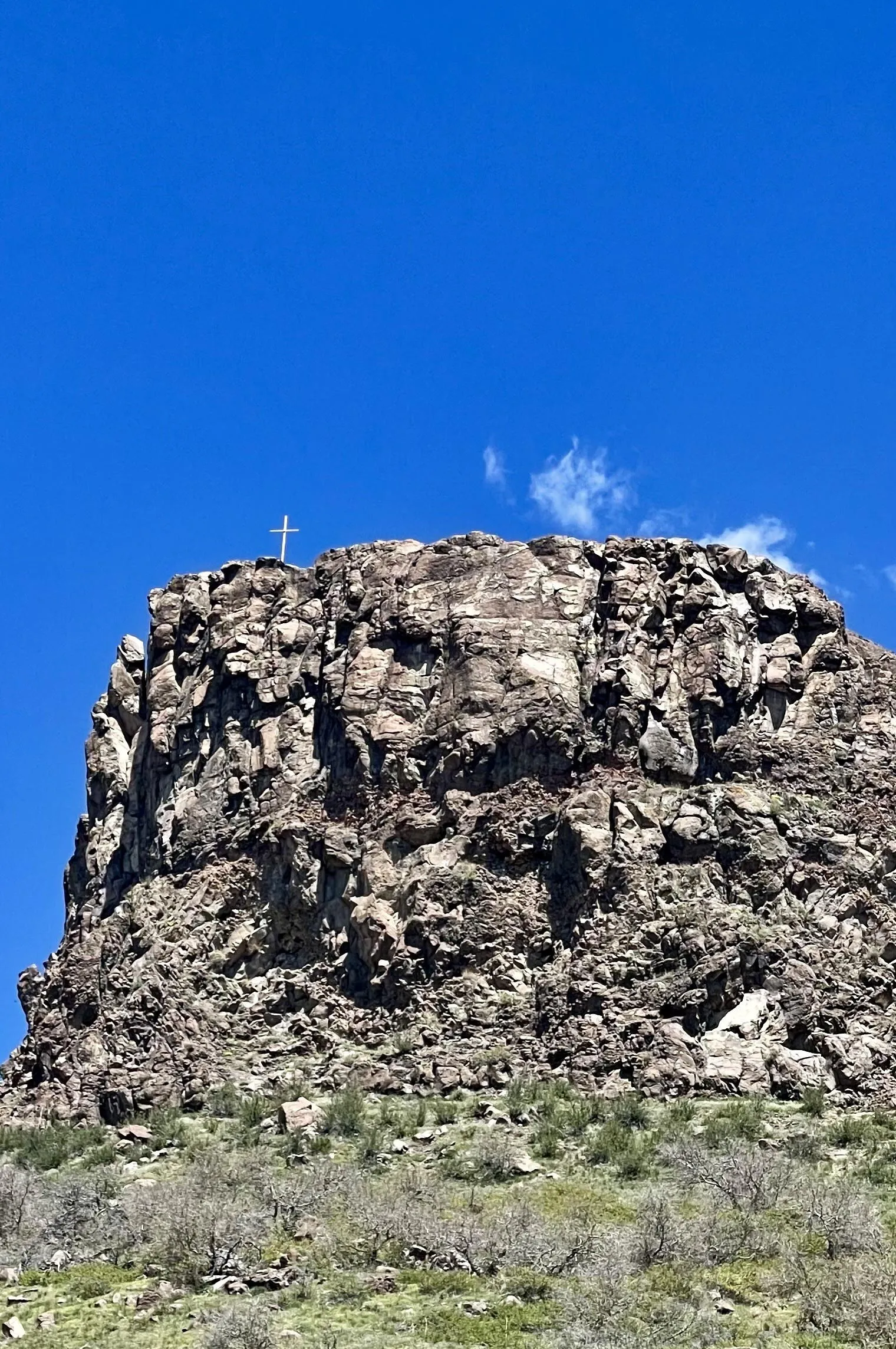On Thursday evening, someone planted a cross on Castle Rock. Who did it? We don't know, but they left a mess--bungee cords and wood shavings.
Also--why? Were they proselytizing, memorializing, or just vandalizing? Were they aware that they were echoing an incident from the past? This seemed like the right time to reprint the story of Castle Rock and the Ku Klux Klan.
The KKK was originally formed in the south, right after the Civil War, but was largely rooted out during Reconstruction.
In the mid-19-teens, a large scale revival of the Klan began, inspired by the movie “The Birth of a Nation.” That film showed a re-imagined version of the south during Reconstruction, and depicted the Knights of the Ku Klux Klan as heroes.
This second generation Klan spread quickly throughout the U.S., including Colorado. Their tenets were pro-white Protestant and anti-anything else. They marketed themselves as a social club but were known for burning crosses and hiding their identities beneath robes and hoods. This second Klan reached its height of popularity in the mid-1920s and crumbled by the early 1930s.
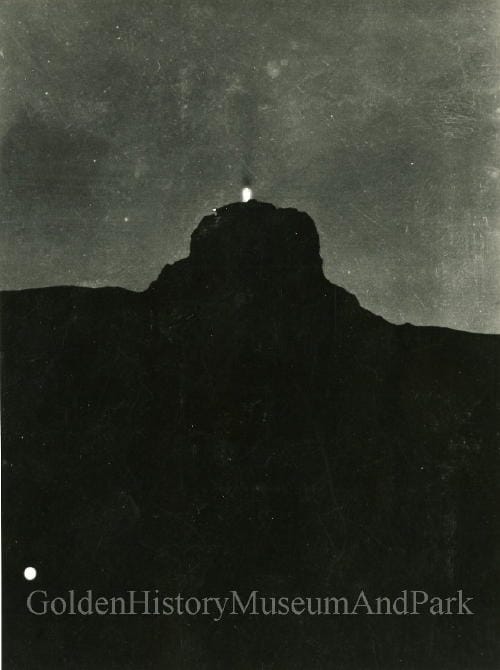
For a time, the Klan chapters throughout the Denver metro area held their gatherings on Castle Rock, above Golden. They drove out to Golden on “the cement road” (Colfax). The automobiles would be stopped by robed and hooded Klansmen on horses and their identities checked before they were allowed to proceed up and across South Table Mountain towards Castle Rock.
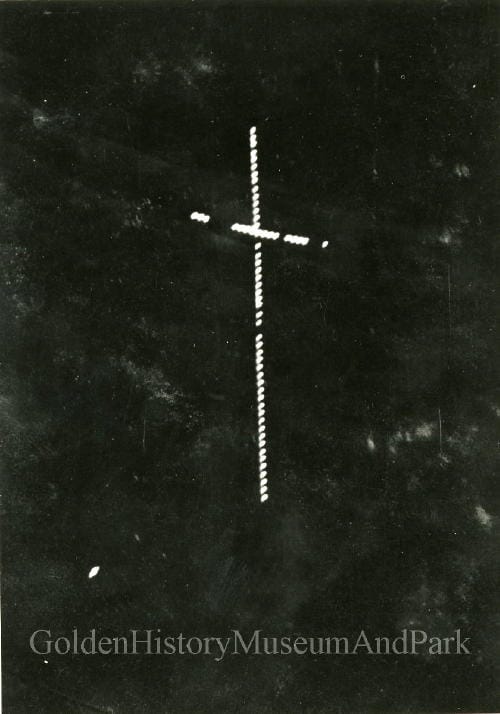
During their meetings, they raised crosses and either burned them or wired them for electric light bulbs. According to the Transcript, the crosses were at least 50 feet high and could be seen for miles around. The Transcripts dated 9/27/23, and 10/25/23 describe the meetings.
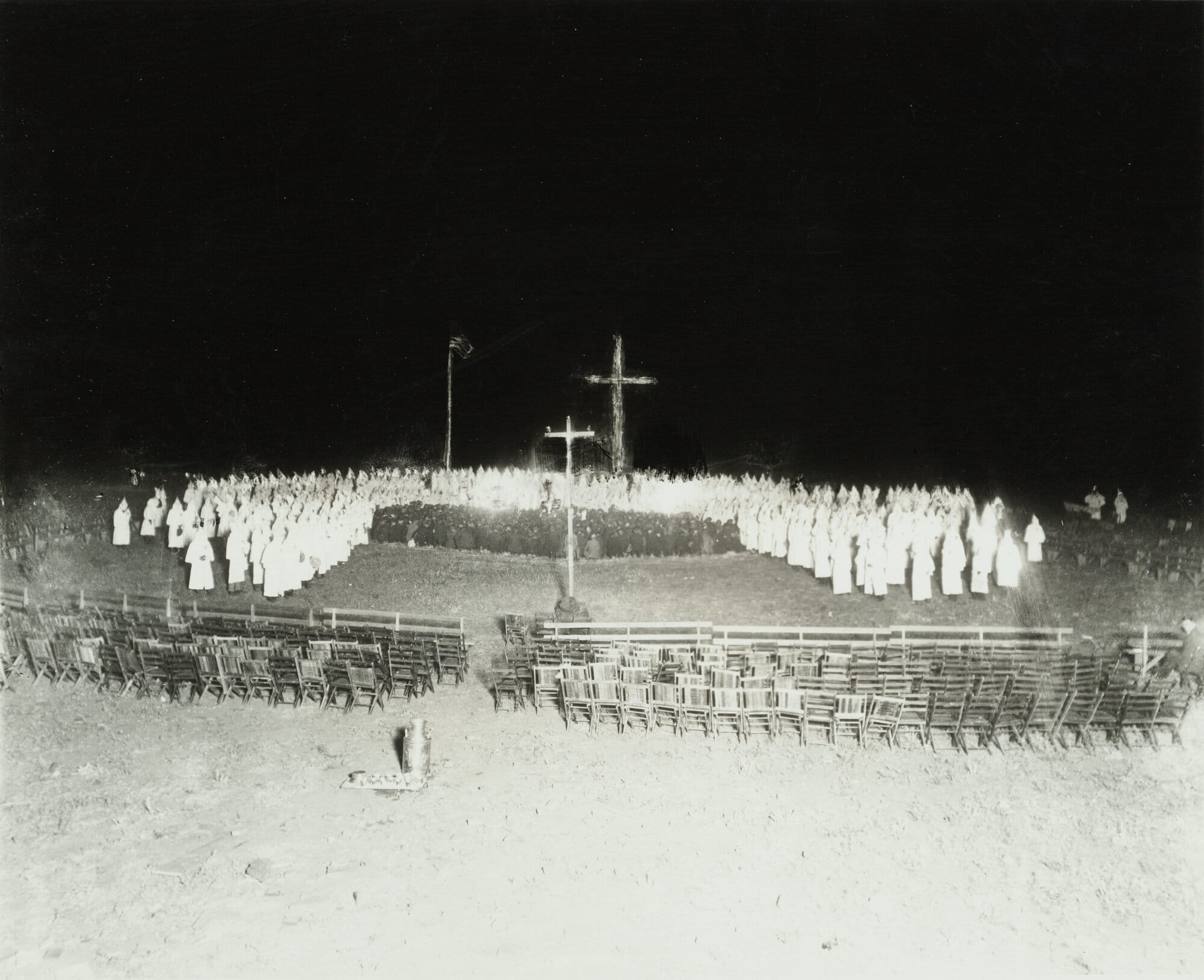
My late friend, Lorraine Wagenbach, was raised on Wide Acres Road, east of Golden. She was very young at the time, but she remembered seeing the line of cars filled with Klansmen driving out from Denver to hold their meetings on South Table Mountain. She wrote,
I can remember the long lines of cars that traveled the old Golden cement road in front of our house and then up Lava Lane (now Quaker Street) in the weekly Ku Klux Klan parade to Castle Rock. I recall people talking of their burning the cross, which I never really understood but which I greatly feared. We could see the white hooded robes of the members through the open touring cars.
From A Woman’s Life in Golden
Lorraine’s family were Catholic, so they had good reason to be nervous about the Klan.
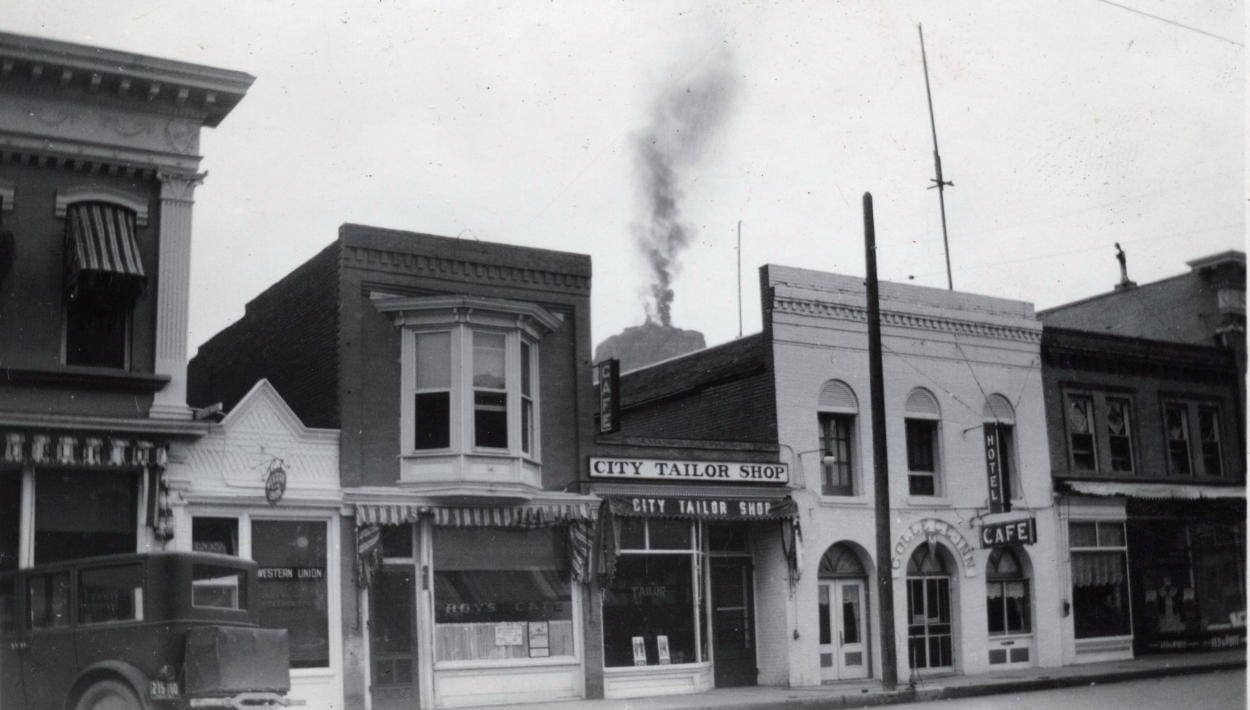
In 1927, the old dance hall on Castle Rock, which had been used as a meeting place for the KKK, burned down. The Klan was beginning to die out by that time as its highest-ranking officers were indicted for embezzlement. That fire marked the end of the KKK's use of Castle Rock.
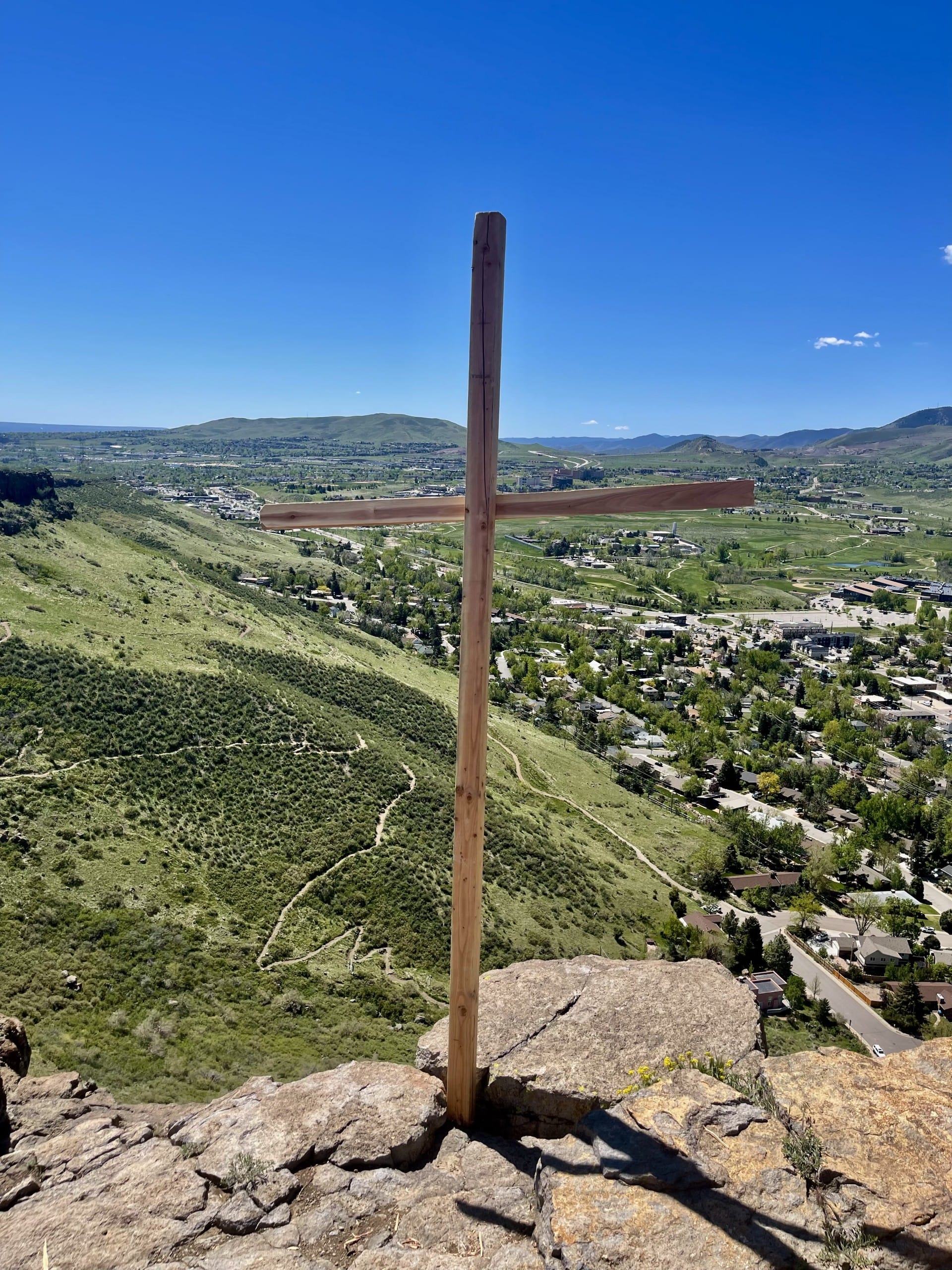
So this week, why did someone go to so much trouble to carry the wood up the mountain, assemble it into a cross, and jam it into the rock? No idea, but it's always worth reminding people that Castle Rock is private property and the people who put it there were trespassing and vandalizing.
The Golden Transcript (originally called the Colorado Transcript) has been publishing since 1866. The Golden History Museum has been working on digitizing the historic issues. You’ll find old Transcripts online at coloradohistoricnewspapers.org

